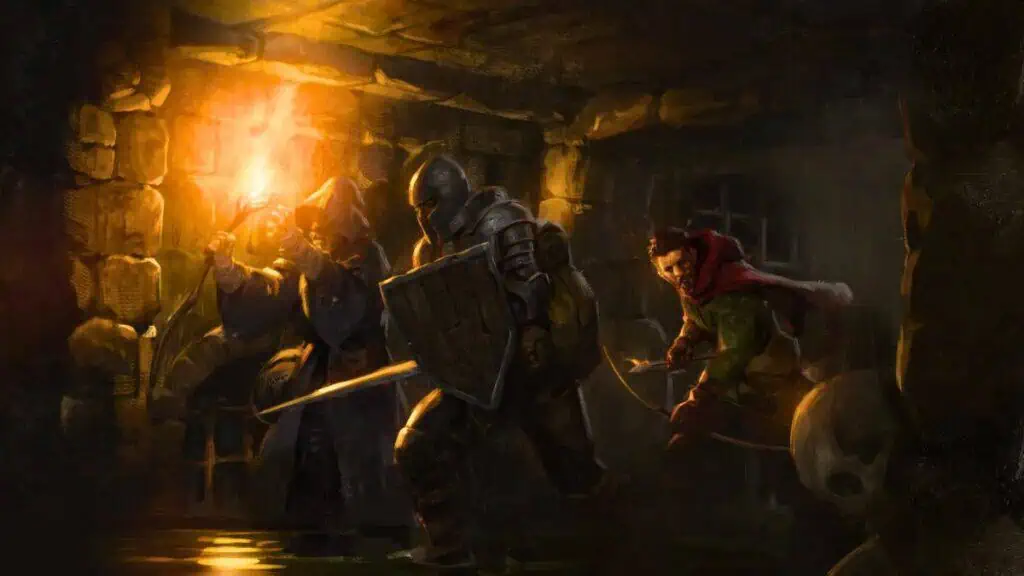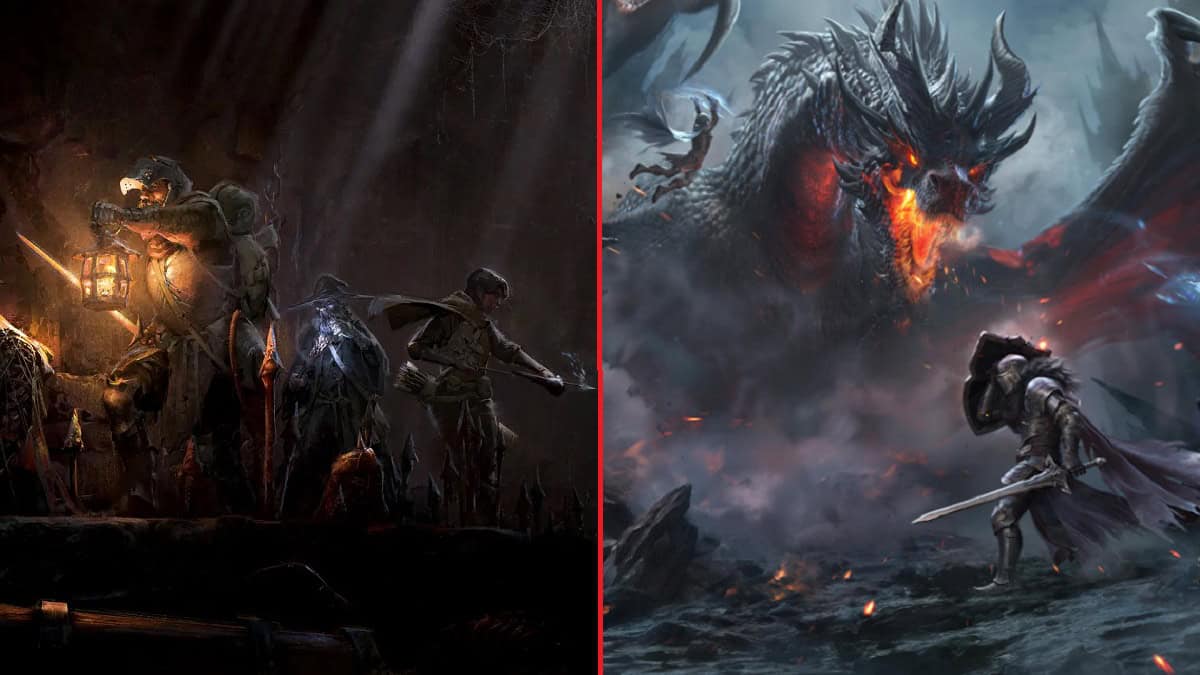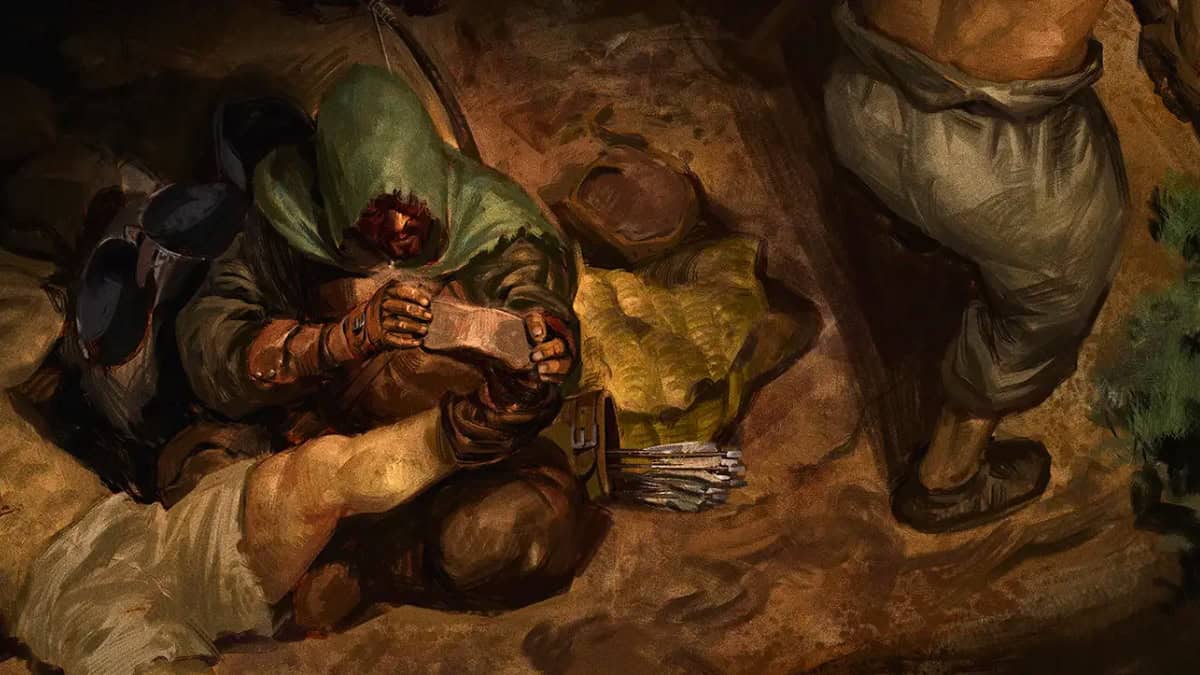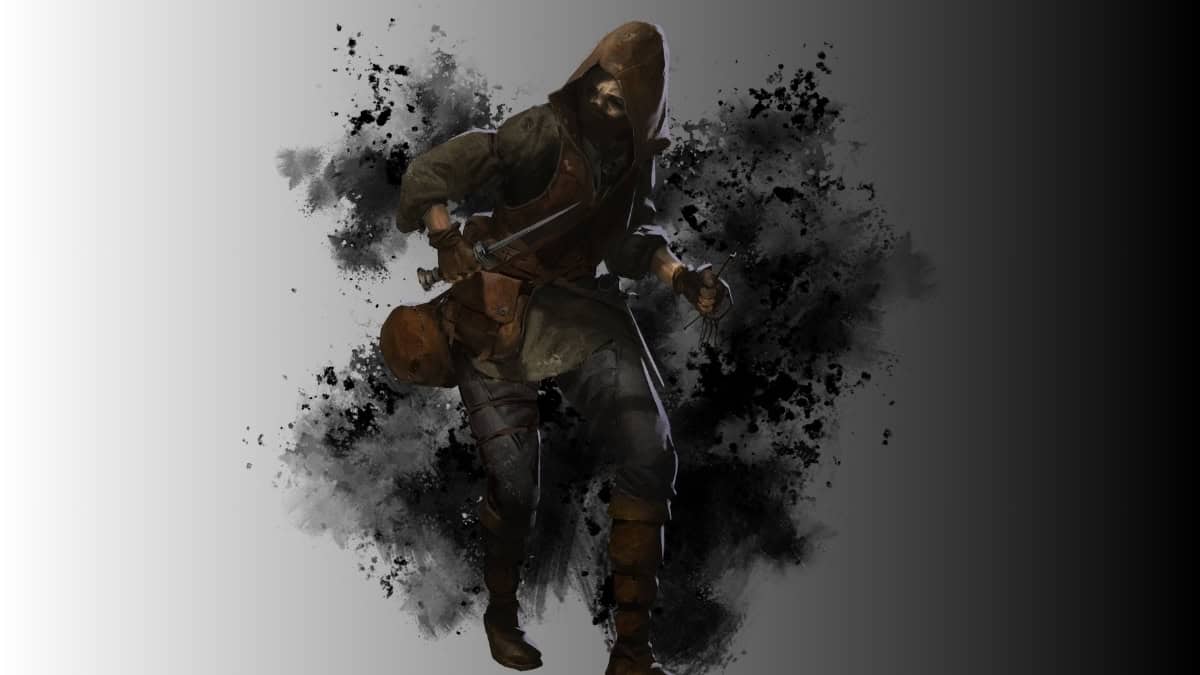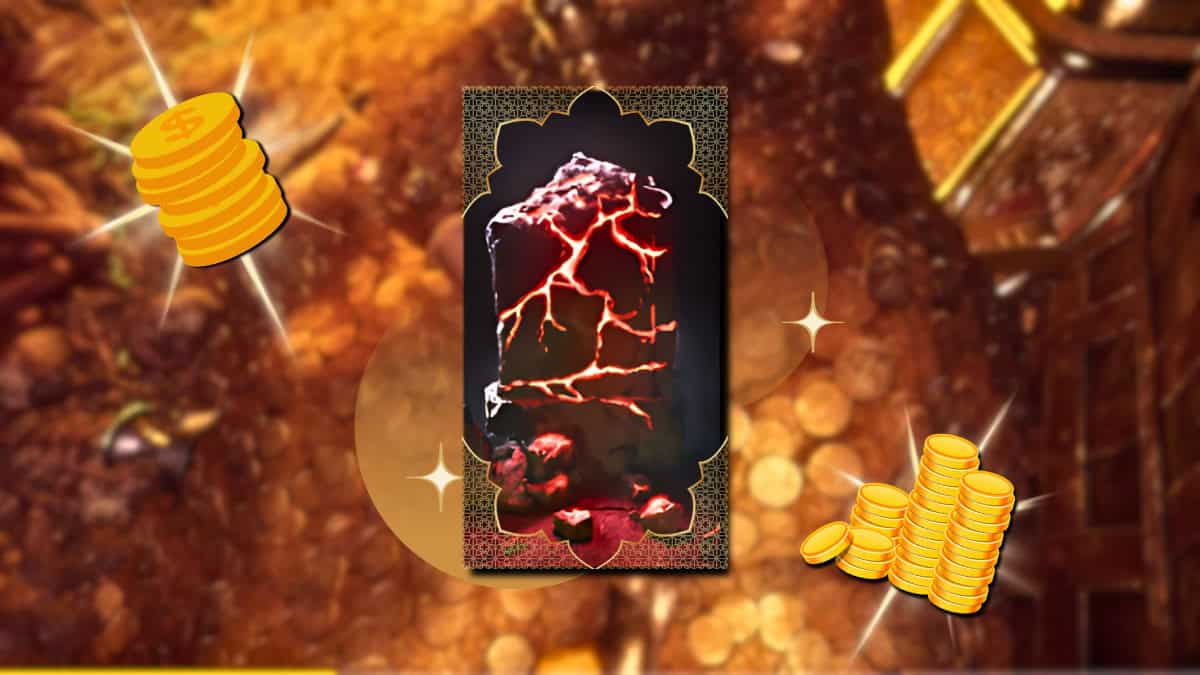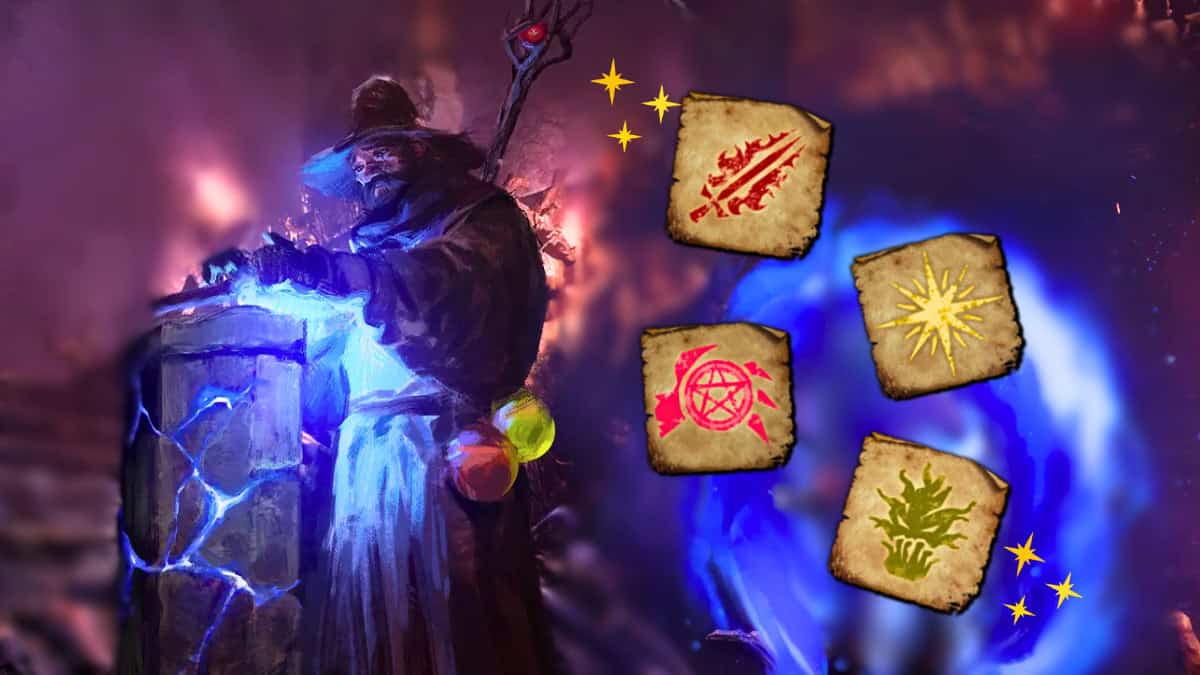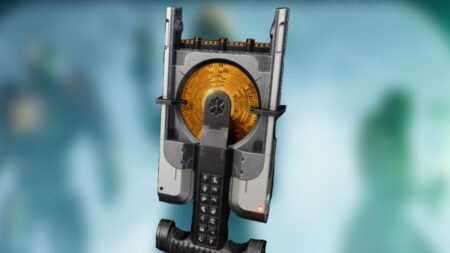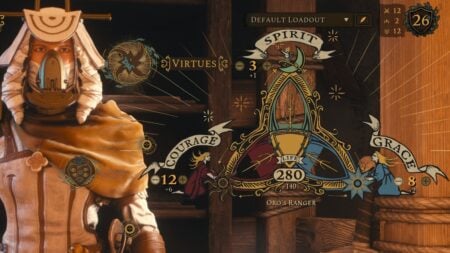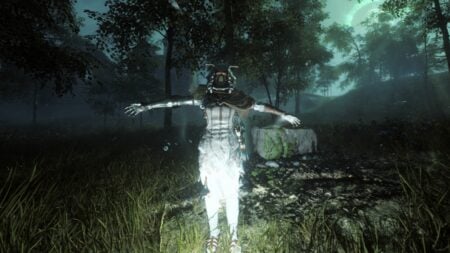Skip To...
Dark and Darker features nine wholly unique classes, each offering a different playstyle and class fantasy. Now, that doesn’t necessarily mean every class is created equally; in fact, some classes fare better in a group than solo. For example, a bard is a fantastic addition to your group, but on their own, they suffer. That doesn’t mean the bard is bad—far from it—but it does mean every class in Dark and Darker gets placed in wildly different tiers based on solo and group content.
[Updated February 28 – Added Sorcerer to the list and adjusted the class rankings.]
Dark and Darker: Class Tier List Overview
If you just want the TLDR of our Dark and Darker class tier list, here’s a handy chart:
| Class | Solo Tier | Group Tier |
| Fighter | B | A |
| Ranger | A | S |
| Barbarian | B | S |
| Rogue | B | C |
| Druid | S | S |
| Wizard | A | A |
| Cleric | B | S |
| Bard | C | S |
| Warlock | A | B |
| Sorcerer | A | S |
One thing to keep in mind is that every class has the capacity to reach the next tier up. If you take into consideration player skill, you can definitely make the A-tier Fighter into an S-tier champion.
Fighter
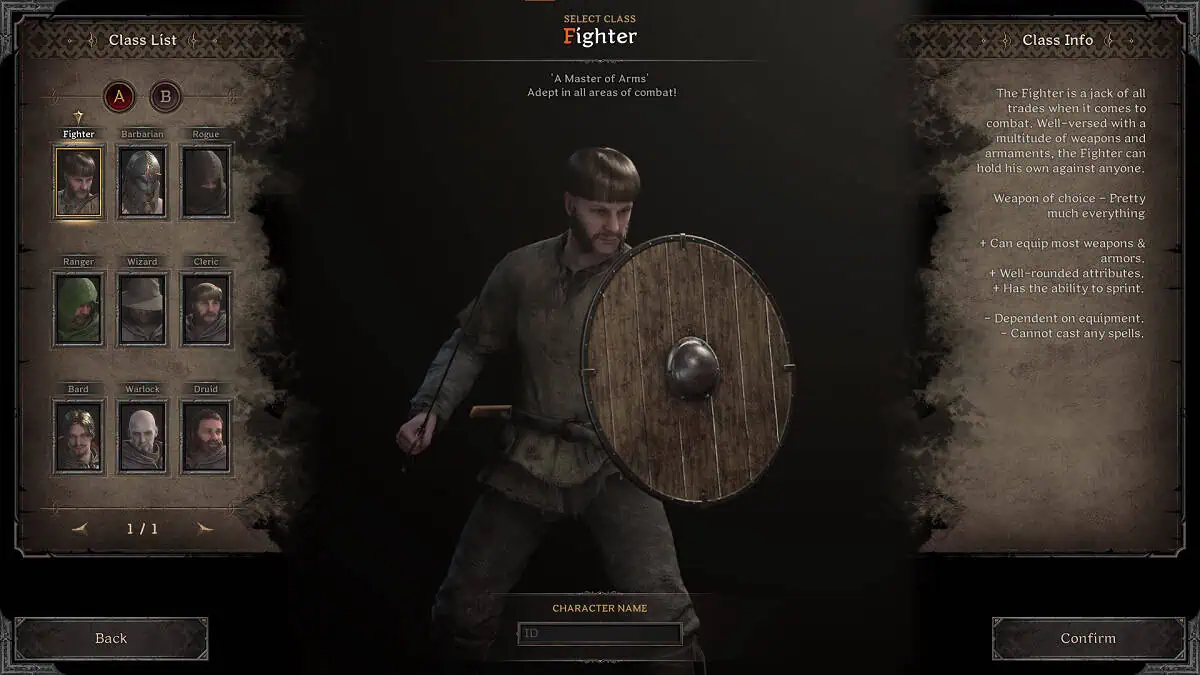
With how well-balanced the Fighter is in Dark and Darker, I’m not surprised it sits comfortably in A-tier. It’s the most flexible when it comes to melee combat, and their defense can get crazy high. They can immediately equip anything they come across and are the simplest class to play. That makes Fighter especially great for new players.
Where the Fighter suffers is, well, every other class doing their job better. Personally, I’d take a barbarian over a Fghter in most cases unless I didn’t know them personally. Their damage output is naturally better, and they still have great defense options (like an axe and shield combo).
Barbarian
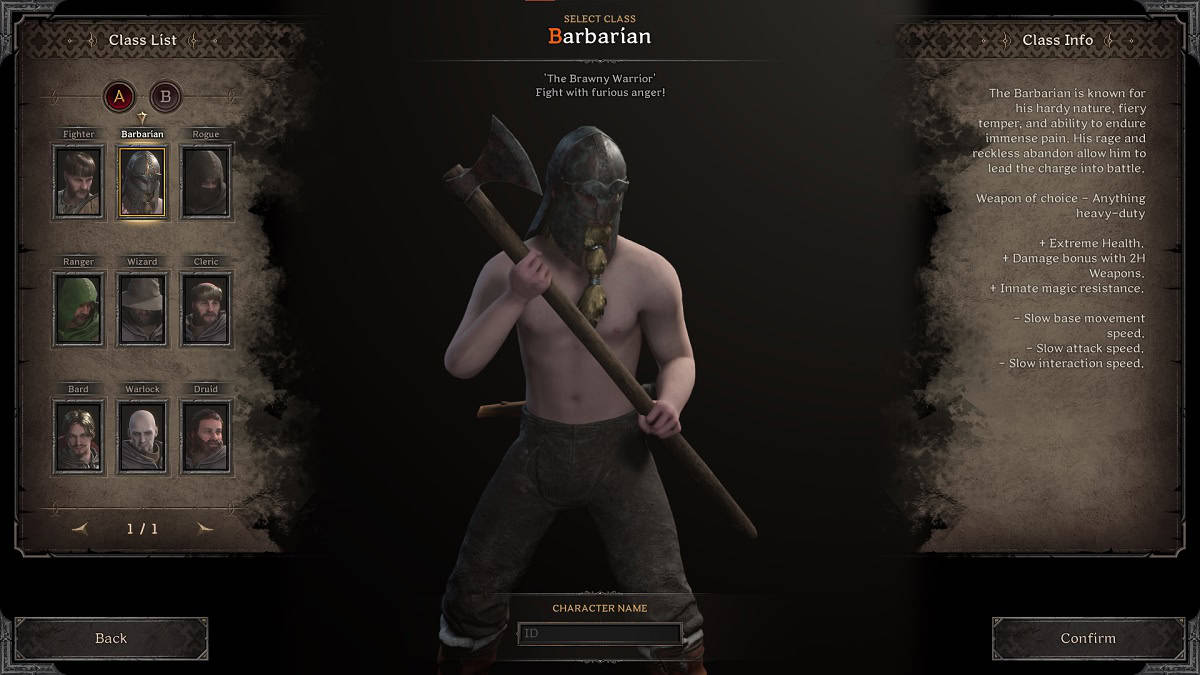
Imagine the berserking Viking, and you’ve essentially got the Barbarian. They have so many perks that buff their damage and defenses, mind you. Their magic resist is leagues better than a Fighter (which is one of their weaknesses) if you go with Iron Will (and you will). Big healthpool from Robust and War Cry and the ability to break through non-reinforced doors is hilarious.
As a solo class, the Barbarian is clearly a contender for S-tier status if you practice. Its natural strength and defense make it even better for groups. War Cry, which I mentioned earlier, gives a 25% max health buff for a few seconds and works for allies, too. Pop the shout right before a skirmish with other players, and you’ll all be harder to kill.
Rogue
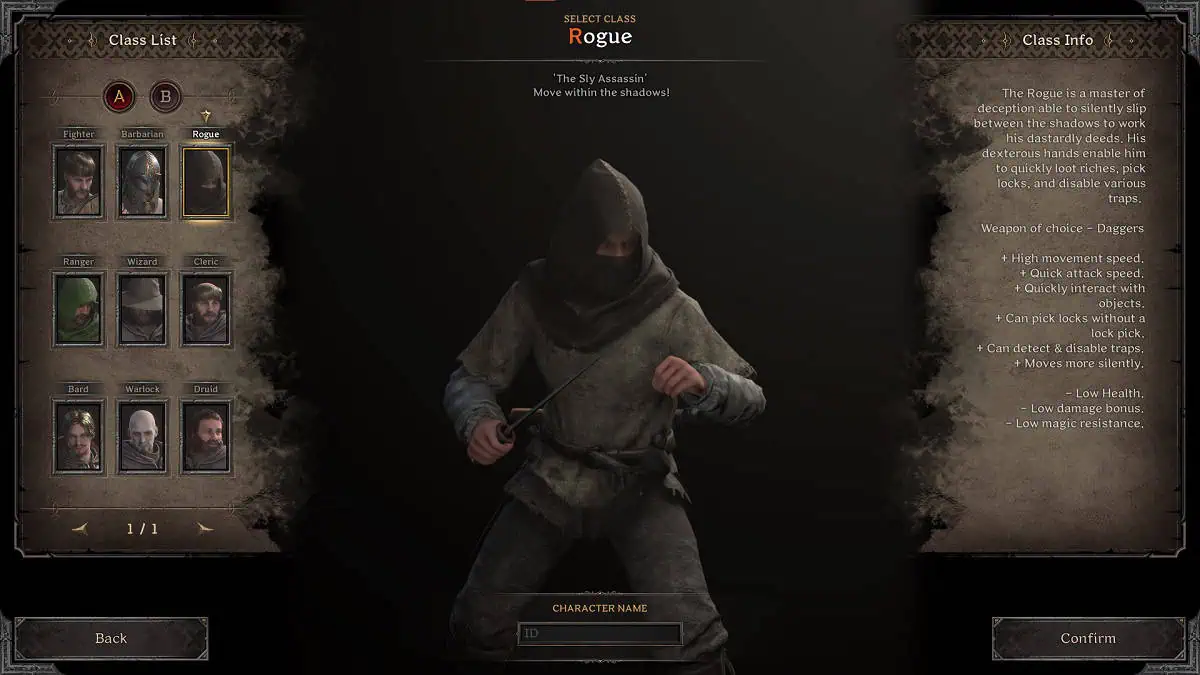
Let me preface this by saying I love playing the Rogue, but only when I don’t want to take Dark and Darker seriously. I play the Rogue when I want to mess around and troll other players. Throwing caltrops between an escape route and then ganking them with Rupture will be forever satisfying. If you are the lone wolf type, you’ll love and excel with the Rogue.
However, the Rogue’s kit definitely exudes that mentality because nothing they provide is really anything special. Their abilities are only really useful for solo rather than a group. If you want damage, take a Barbarian or Fighter. Bummed out at missing loot? There are plenty of chests to find. It’s fun solo, and in group play you can blow up squishy casters, but you don’t have much of anything else to help the group.
Ranger
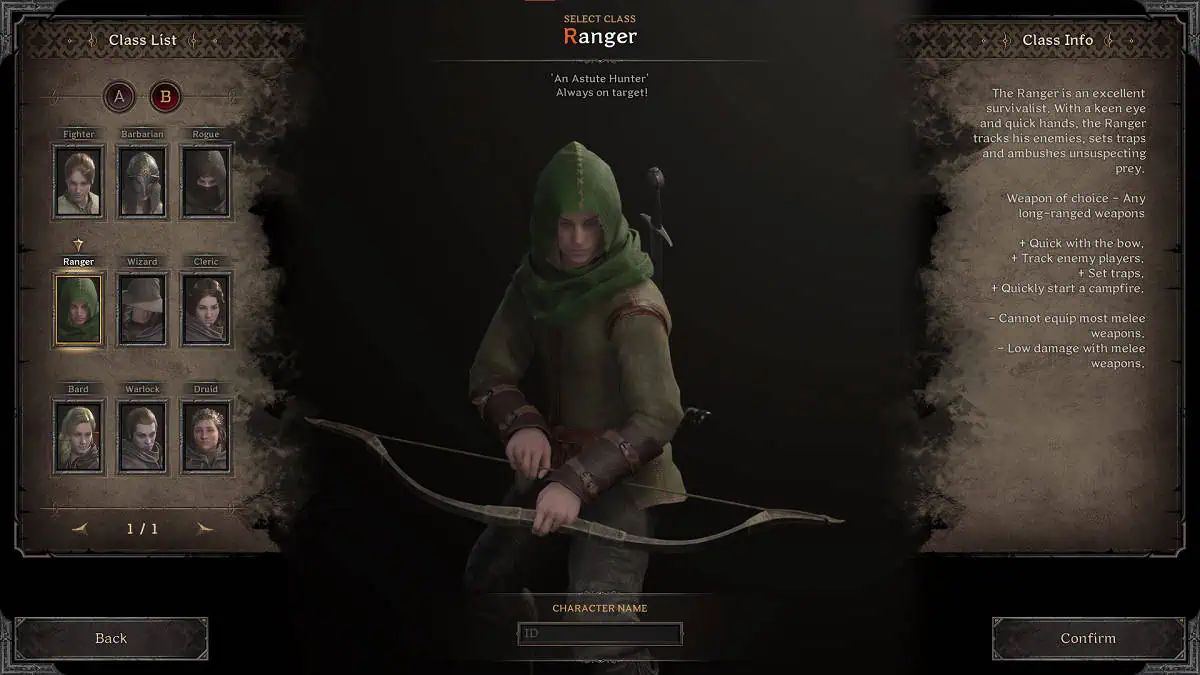
The Ranger is another class in Dark and Darker with a kit that plants one foot firmly into solo play and another in group play. Rangers can go either way. With a good aim, you can dome players from across the room before they even have time to register you’re there. And with Field Ration, you can keep your health topped off.
The Ranger’s biggest weakness is melee combat, both in damage and options. You have access to all sorts of bows but only three melee weapons. The armor you can wear isn’t that much better than a Rogue, either. That’s why putting a Ranger in a group is the better deal to shore up their weaknesses. Tracking enemy footsteps is also incredibly useful.
Druid
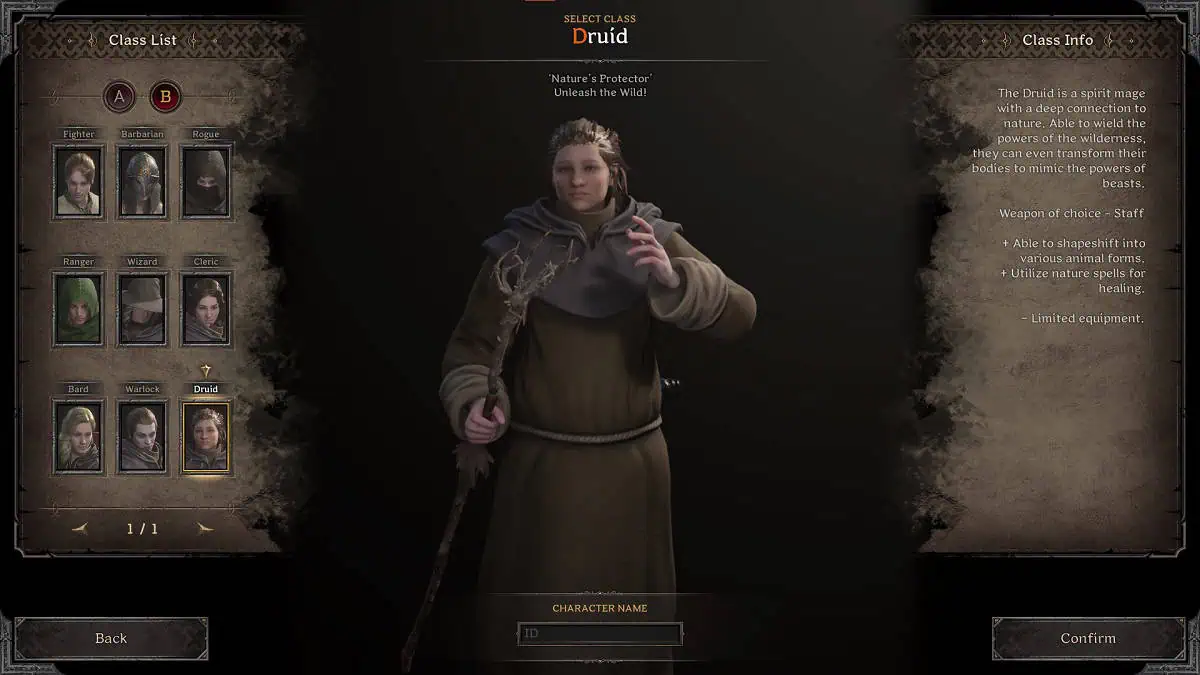
This is my personal favorite class in Dark and Darker, so I’ll try to keep my bias in check, but wow—does the Druid have a lot of utility! You can fit any role—healer, damage, or tank—and excel in every one. It’s all thanks to their combined abilities of magic and shapeshifting. Their innate skills also make them exceptional in groups.
The main problem with the Druid class isn’t the “hybrid tax” but a lack of skill. It’s really easy to tell a bad Druid from a good one. There’s a lot to juggle, so it can be very overwhelming, which can lead to mistakes and death.
The Druid’s weakness also shifts depending on your form. Each form has a weakness baked into the mechanic like the panther’s 30% debuff to max health and incoming physical and magical healing.
Wizard
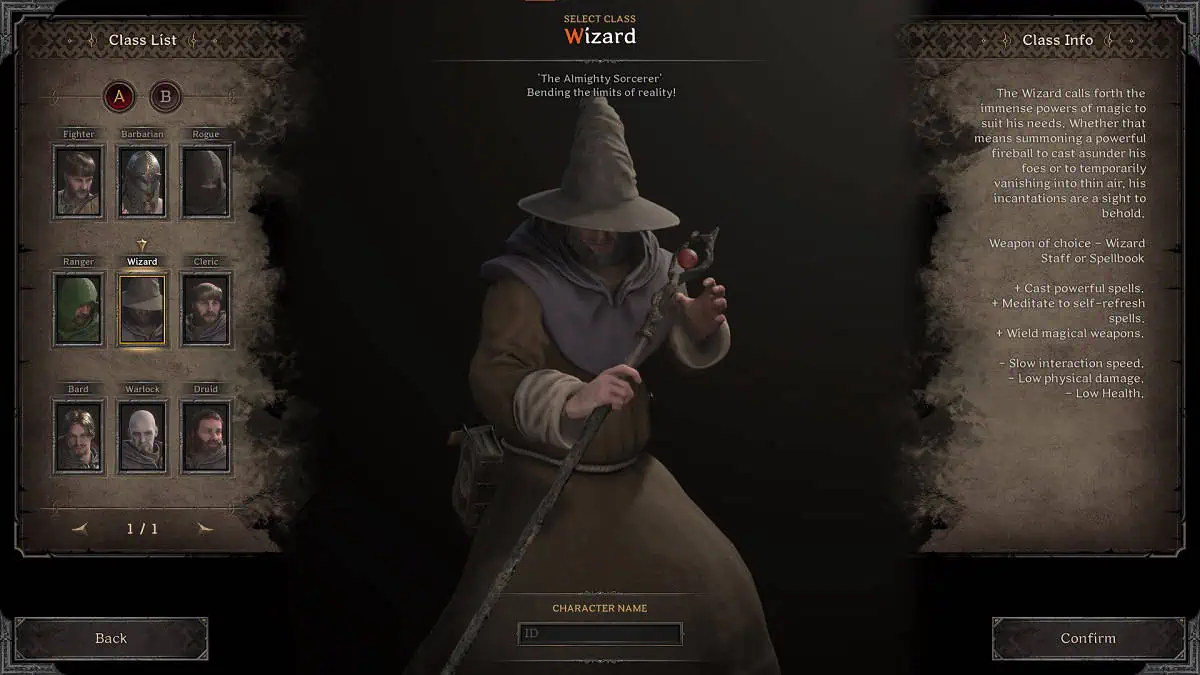
Getting pummeled by a fireball cast from the shadows by a Wizard is the stuff of nightmares. If I’m ever playing a Ranger, I’ll shoot arrows into dark corners just in case there’s a Wizard hiding. Their powerful fireball and chain lightning are awesome, and they even have some utility spells, like Invisibility and Haste. Even Magic Lock comes in handy for borrowing a few extra seconds of preparation.
Unfortunately, the Wizard is squishy by nature, and you can’t do much to mitigate it with armor. Arcane Shield is solid but limited. Once a melee class gets close enough, your goose is cooked.
Now, Wizards are especially susceptible to player skill, especially if you bring one in your group. If you play one, keep in mind your spells hurt allies, too, so think twice before launching that fireball.
Cleric
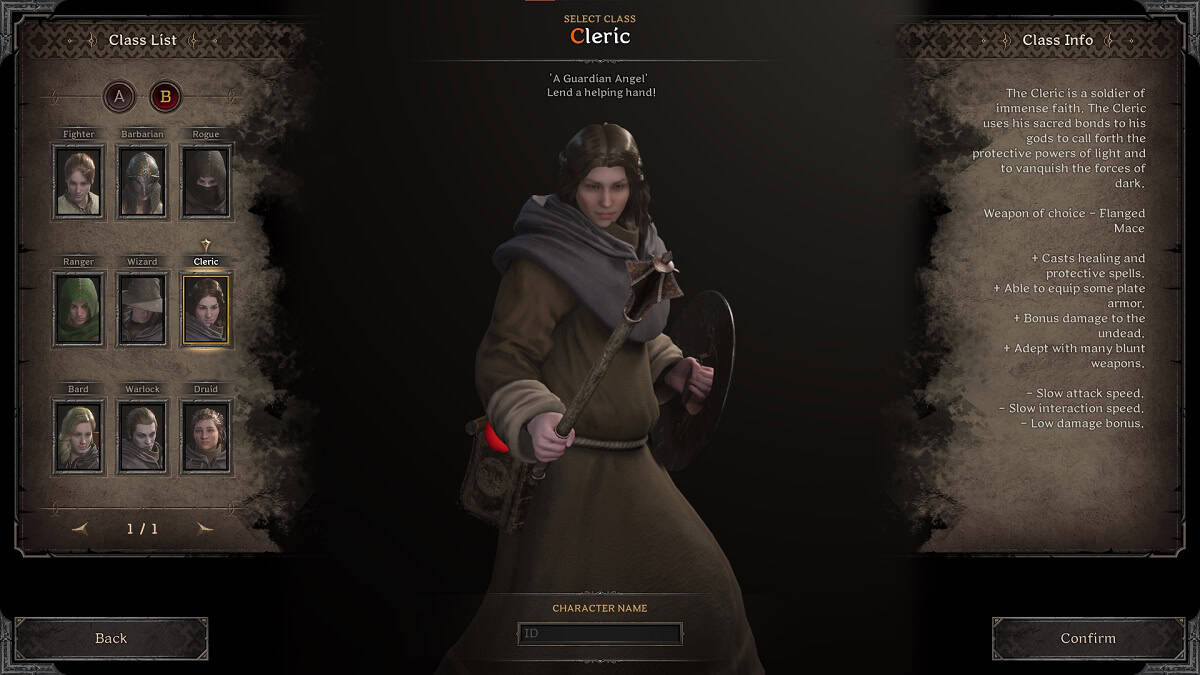
The Cleric is the de-facto healer in Dark and Darker, or at least was until the Druid was officially released. Before the Druid came along, you more or less needed a Cleric in your group. They have a group and single-target heals: Sanctuary and Lesser Health, respectively. More importantly, Clerics have strong buffs in the form of Bless and Divine Strike.
Interestingly enough, the Cleric is also surprisingly deadly. You’ve got Holy Strike, Divine Strike, Bind, Earthquake, and Locusts Swarm. Like the Fighter, Clerics is an easy class to approach as a beginner and in solo play.
Speed is the Cleric’s biggest weakness. You feel notably heavy, especially with your weapon swing. While you get pretty good defensive options, weapon options are iffy, but you can work with it. The powerful buffs definitely make up for it.
Bard
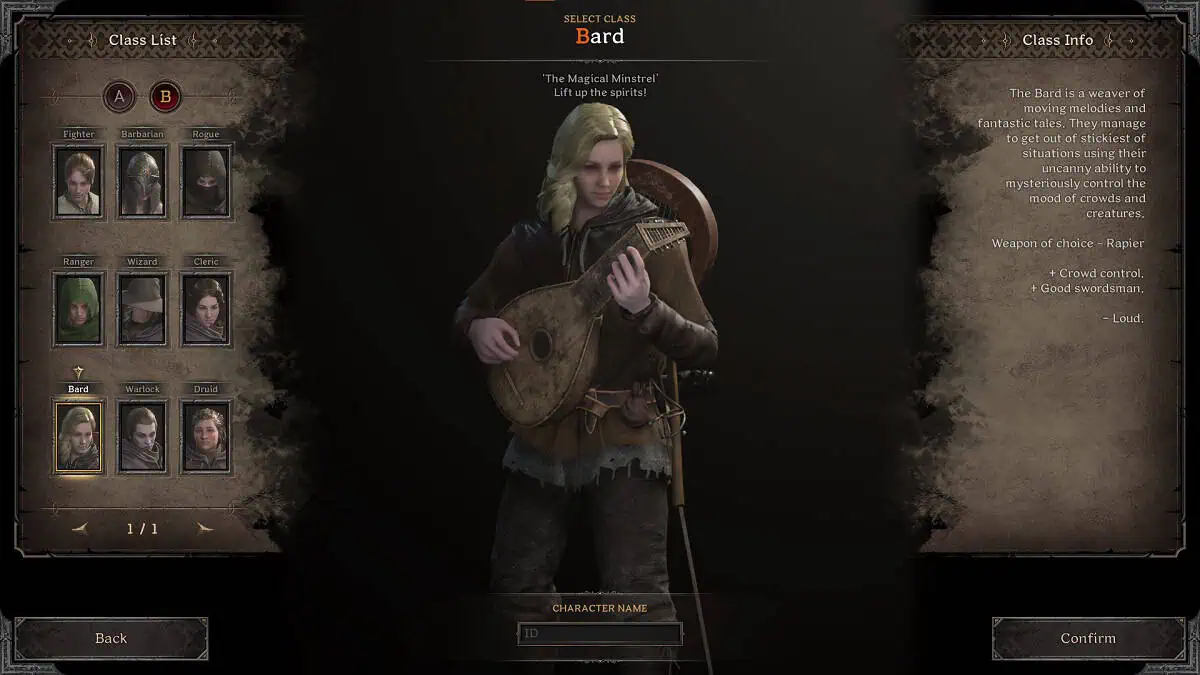
Speaking of buffs, the Bard is all about helping out the group, which is also their biggest weakness. If you want the worst solo experience in Dark and Darker, play as a Bard. They aren’t really equipped for solo play since most of their kit revolves around jamming on an instrument.
But as a performer? The Bard is a serious contender as my plus one if they’re a good bard. I might even take one over a Cleric. Their debuffs, like Shriek of Weakness and Banshee’s Howl, are on my list of favorite support spells. Throw in a stronger healer, like a druid, and you’ve got yourself two-thirds of a team.
Warlock
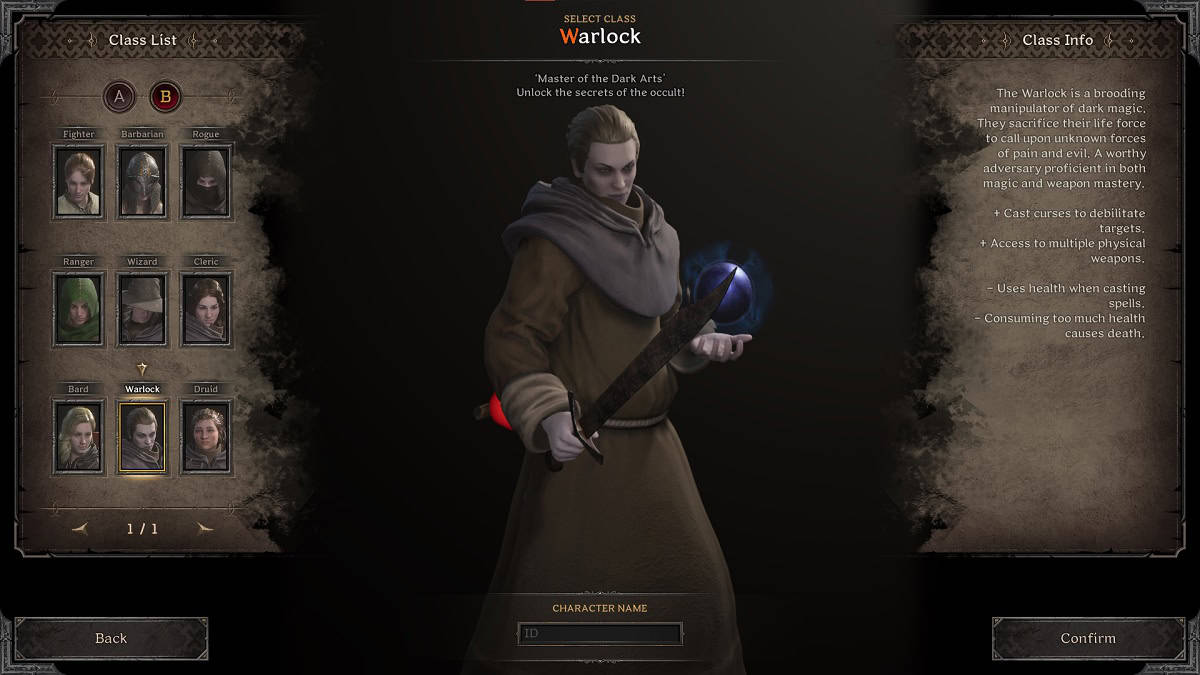
Unlike Wizards, the Warlock casts magic using their health, meaning you’re only limited by how much HP you have. In return, they can access some incredibly strong damage spells and utility, like Hellfire, Blow of Corruption, Summon Hydra, and Curse of Weakness.
Another quirk of the Warlock is Demon Armor, a perk that lets you wear plate armor. With Torture Mastery and Vampirism healing you, you can potentially create a tanky caster.
However, Warlocks are a lot like Rogues in that most of their abilities are self-serving and only apply to them, aside from a few spells. If you want a more well-rounded team, you’d sooner go with a Druid or Cleric over a Warlock.
Sorcerer
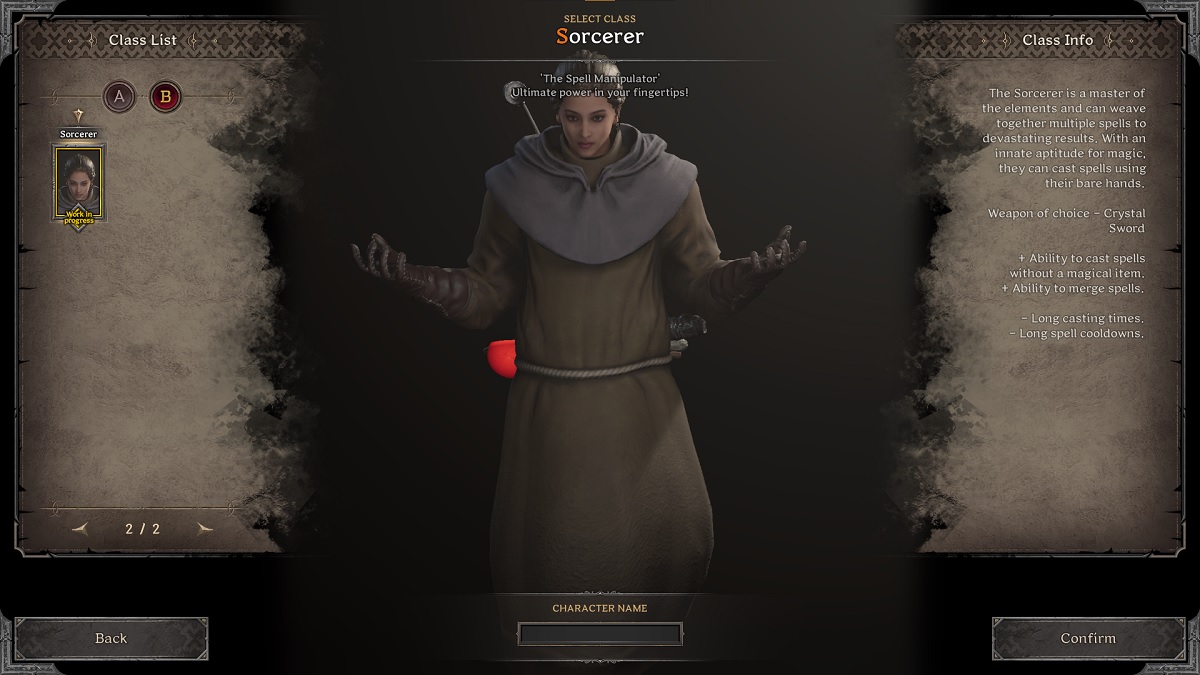
The Sorcerer’s are crazy good at kiting other players, which is particularly good if you’re soloing. Just cast Windblast when a melee class gets too close, retreat to a safe location, then blow them up with another spell. Doesn’t kill them? That’s okay! Just Windblast again. Rinse and repeat! Maybe stick them with Glaciate for good measure and slow them down.
In both group play and solo, the Sorcerer’s ability to merge spells is also invaluable. Sure, you’ll have to taper the amount of AOE you do (so you don’t hit your buddies) but there are still numerous spells you have access to, like summoning lava elementals, Wall of Fire (great at separating groups), Elemental Bolt, and utility like Mud Shield.

